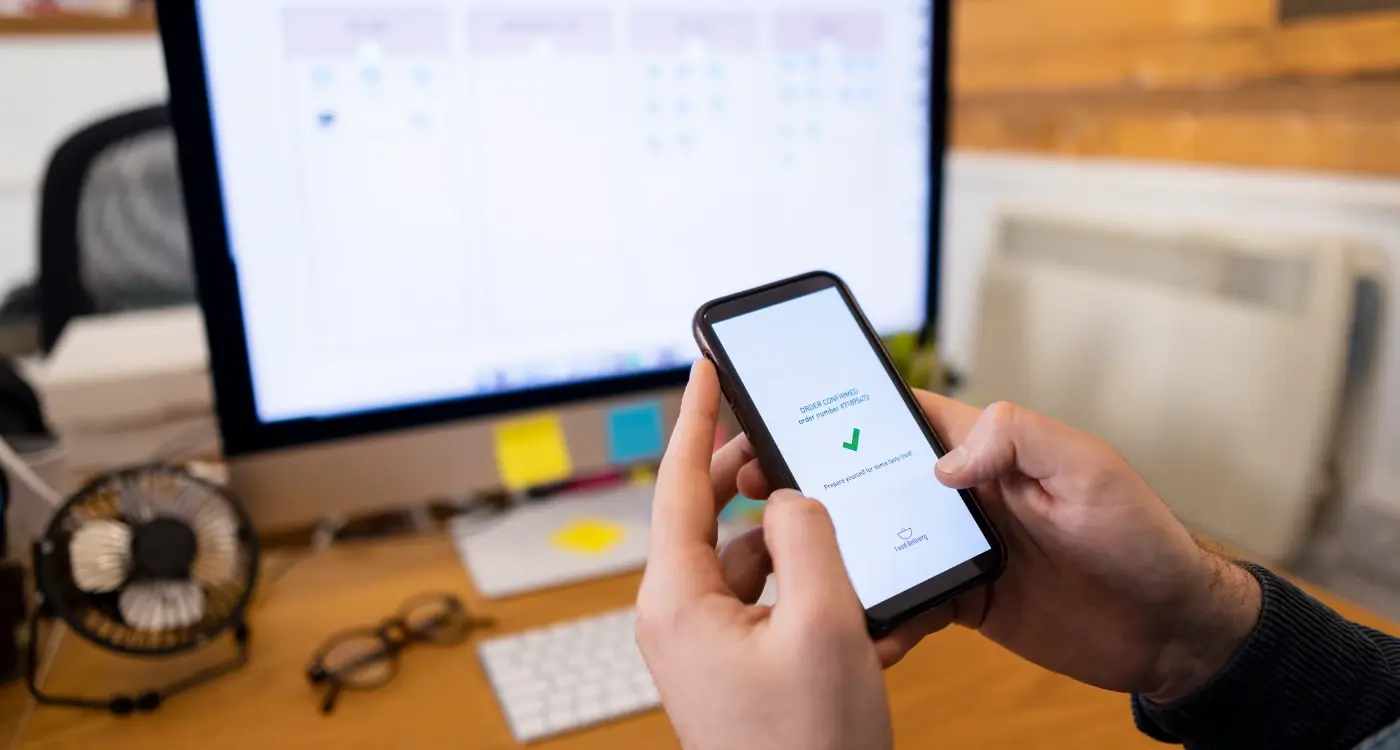What's The Best Way To Collect Feedback From App Users?
Every day, millions of people download mobile apps, use them for a few minutes, then delete them forever. Research shows that 80% of users abandon an app within three days of downloading it. That's a staggering number when you think about it—all that time, money, and effort poured into development, only to watch users disappear without a trace.
The apps that survive this brutal culling process all share one thing in common: they listen to their users. They've mastered the art of collecting feedback and turning it into actionable improvements. It's not rocket science, but it does require the right approach and tools.
The best mobile app developers don't just build features—they build relationships with their users through meaningful feedback collection
User research isn't just about fixing bugs or adding new features; it's about understanding what makes people stick around. When you implement effective feedback methods, you're essentially getting a direct line to your users' thoughts, frustrations, and desires. This guide will walk you through the most effective ways to collect that precious feedback—from simple in-app surveys to sophisticated behavioural analytics. We'll explore what works, what doesn't, and how to turn all that data into real improvements that keep users coming back.
Why Your App Needs User Feedback
I'll be honest with you—building an app without user feedback is like trying to hit a target blindfolded. You might get lucky, but you're more likely to miss completely. After working with hundreds of clients over the years, I've seen brilliant apps fail because developers ignored what their users were actually saying.
User feedback tells you what's working and what isn't. It's that simple. Your users are the ones tapping, swiping, and getting frustrated when something doesn't work as expected. They're also the ones who'll discover features you never thought of or use your app in ways you didn't plan for.
The Real Benefits of User Feedback
Let me break down why feedback matters so much:
- It helps you fix problems before they become bigger issues
- Users feel heard and valued when you respond to their suggestions
- You can prioritise which features to build next based on real demand
- It reduces the risk of building something nobody wants
- Your app store ratings improve when users see you're listening
The apps that succeed long-term aren't necessarily the ones with the most features—they're the ones that solve real problems for real people. Understanding why most business apps fail can help you avoid common pitfalls and build something users actually want.
In-App Feedback Collection Methods
Right, let's talk about the bread and butter of mobile app feedback collection—getting responses directly from people whilst they're using your app. This is where the magic happens because you're catching users in the moment, when their experience is fresh and their emotions are real.
The most common approach is the simple feedback widget or button that sits somewhere in your app interface. You know the type—usually tucked away in settings or floating as a small icon that says "feedback" or "help". These work well because they're always available, but they tend to get lower response rates since people need to actively seek them out.
Pop-up Surveys and Rating Prompts
Pop-up surveys are more aggressive but can be incredibly effective for user research when timed correctly. The key is knowing when to show them—after a user completes a task, reaches a milestone, or has been using the app for a certain period. Nobody wants to be interrupted mid-flow, but catching someone after they've just successfully booked a table or completed a purchase? That's prime time.
Rating prompts work similarly but focus on getting those all-important star ratings. Apple and Google have built-in systems for this, which makes implementation straightforward.
Contextual Feedback Tools
The most sophisticated feedback methods are contextual—they appear based on user behaviour rather than time or location. If someone's struggling with a particular feature, that's when you want to ask for their thoughts, not three days later when they've forgotten what frustrated them.
Never show feedback prompts during critical user journeys like checkout or sign-up processes. Wait until after these moments to avoid disrupting conversions.
Email and Survey-Based Feedback Systems
I'll be honest with you—email feedback collection isn't the most exciting topic in the world, but it's one of the most reliable ways to get detailed responses from your users. Unlike quick in-app ratings, emails give people space to really think about their answers and provide the kind of feedback that can genuinely improve your app.
Getting the timing right
The trick with email surveys is knowing when to send them. Too early and users haven't had enough time to form proper opinions; too late and they might have already deleted your app or forgotten about their experience. I usually recommend waiting until someone has used your app for at least a week—this gives them enough time to explore features and encounter any problems.
Keeping surveys short and sweet
Nobody wants to fill out a 20-question survey about your app, no matter how brilliant it is. Stick to 3-5 questions maximum and make sure each one serves a purpose. Ask about specific features, pain points, or what they'd like to see improved. Open-ended questions work well here because people can explain their thoughts properly rather than just picking from multiple choice options.
The response rates might be lower than in-app feedback, but the quality of responses tends to be much higher. People who take time to respond to email surveys are usually your most engaged users, so their feedback is particularly valuable.
App Store Reviews and Social Media Monitoring
App store reviews are like having a permanent suggestion box that never gets emptied—and trust me, people aren't shy about using it! Both the App Store and Google Play store reviews give you direct insight into what users really think about your mobile app. Understanding how important app reviews and ratings are will help you prioritise this feedback channel appropriately.
Reading through reviews can be tough sometimes (nobody likes criticism) but they're gold for user research. You'll spot patterns quickly—if twenty people mention the same bug, you know what needs fixing first. The star ratings give you a quick health check, but the written reviews tell the real story about your app's performance.
Social Media Listening
Social media monitoring takes your feedback collection beyond the app stores. Users often share their experiences on Twitter, Facebook, Instagram, and Reddit without tagging you directly. Set up alerts for your app name and related keywords—you'd be surprised how much people discuss apps in their everyday posts.
The most honest feedback often comes from places where users don't think you're listening
Don't just collect this feedback—respond to it! Engaging with reviewers shows you care about their experience. A simple "thanks for the feedback, we're working on it" can turn a frustrated user into a loyal advocate. These feedback methods work best when combined with other user research techniques, giving you a complete picture of your app's user experience.
User Testing and Interview Techniques
There's something quite magical about watching real people use your app for the first time—and I don't mean magical in a good way! You'll quickly discover that users don't behave anything like you expected them to. They'll tap buttons you never thought they'd tap, get confused by things you thought were obvious, and completely ignore features you spent weeks perfecting.
User testing is simply observing people as they use your app whilst asking them to think out loud about what they're doing. It sounds straightforward, but there's a real skill to doing it well. The key is to stay quiet and let them struggle—resist the urge to jump in and help when they get stuck. That's where the gold is!
Getting the Most from User Interviews
When conducting interviews, avoid leading questions like "Do you like the blue button?" Instead, ask open-ended questions such as "What do you think about this screen?" or "How would you expect this to work?" The goal is to understand their natural thought process, not to validate your assumptions.
I always recommend testing with 5-8 users per round—you'll be amazed how quickly patterns emerge. Record the sessions if possible; you'll catch things you missed the first time around, and it's brilliant for showing stakeholders exactly what users are experiencing.
Analytics and Behavioural Data Collection
Here's the thing about analytics—they tell you what users actually do, not what they say they do. I've worked on countless mobile apps where clients were convinced their users wanted feature X, but the behavioural data showed they barely touched it. That's why analytics are so powerful for user research; they give you the unfiltered truth about how people interact with your app.
The beauty of behavioural data is that it's always collecting feedback, even when users aren't actively giving it. Every tap, swipe, and abandoned action tells a story. When someone downloads your app and deletes it within 24 hours, that's feedback. When they get stuck on a particular screen for ages, that's feedback too.
Key Metrics That Matter
Not all analytics are created equal. Focus on these behavioural indicators that actually reveal user sentiment:
- Session duration and frequency
- Feature adoption rates
- Drop-off points in user flows
- Crash reports and error frequencies
- Time spent on specific screens
- User journey patterns
Set up event tracking for your most important user actions from day one. You can't improve what you don't measure, and historical data becomes invaluable when making design decisions.
The real magic happens when you combine this data with other feedback methods. Analytics show you the 'what' and 'where', but you'll need surveys and user interviews to understand the 'why' behind those behaviours.
Making Sense of Feedback Data
Right, so you've collected all this feedback from your users—now what? This is where many app developers get stuck. You've got emails, survey responses, app store reviews, and analytics data all sitting there, but turning that into actionable insights? That's the tricky bit.
The secret is to organise everything into clear categories. I like to group feedback into three main buckets: bugs and technical issues, feature requests, and user experience problems. This makes it much easier to spot patterns and decide what needs fixing first.
Spotting the Real Issues
One complaint about your app crashing might be a one-off problem. Ten complaints about the same crash? That's a priority. Look for themes rather than individual comments—if multiple users mention the same pain point, that's your smoking gun.
Creating Your Action Plan
Once you've identified the patterns, create a simple priority system. I use a basic scoring method that considers how many users are affected, how severe the issue is, and how easy it would be to fix. Learning how to handle user feedback for your mobile app effectively will help you develop a systematic approach to this process.
- High-impact bugs that affect lots of users
- Quick wins that improve user experience
- Feature requests mentioned by multiple users
- Issues that directly impact app store ratings
Don't try to fix everything at once—that's a recipe for burnout. Pick your battles and tackle the most important issues first. If you're particularly concerned about ratings, focus on how to improve your app's ratings through strategic feedback implementation.
Conclusion
After working with countless mobile app projects over the years, I can tell you that collecting user feedback isn't just nice to have—it's what separates successful apps from the ones that disappear into the digital graveyard. The methods we've covered in this guide each have their place in your feedback toolkit, and the best approach is usually combining several of them rather than relying on just one.
Start simple with basic in-app feedback collection methods and app store monitoring, then gradually build up to more sophisticated approaches like user testing and behavioural analytics. The key is to match your feedback methods to your app's stage of development and your users' preferences. A gaming app might thrive on social media monitoring, while a productivity app might benefit more from email surveys and user interviews.
Don't forget that collecting feedback is only half the battle—you need to act on what you learn. Users will stop giving you feedback if they feel ignored, and that's a relationship that's hard to rebuild once it's broken. The most successful mobile app teams I've worked with treat user research as an ongoing conversation rather than a one-time event, constantly refining their approach based on what works best for their specific audience.
Share this
Subscribe To Our Learning Centre
You May Also Like
These Related Guides

What Are The Best Tools For Remote User Testing Of Mobile Apps?

What Questions Should I Ask Users When Collecting Feedback?



